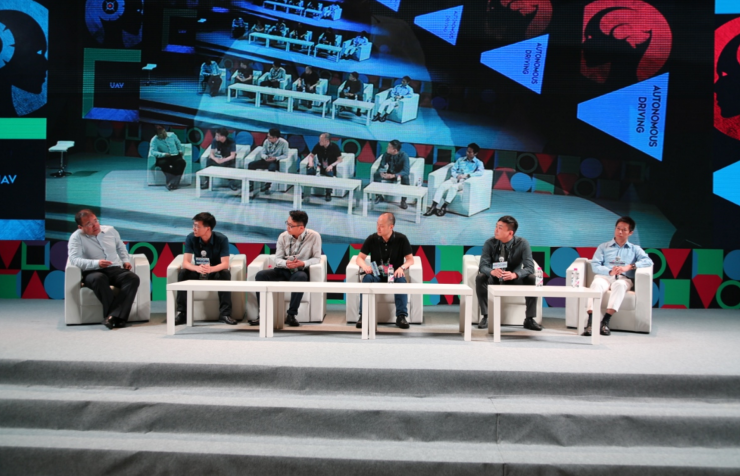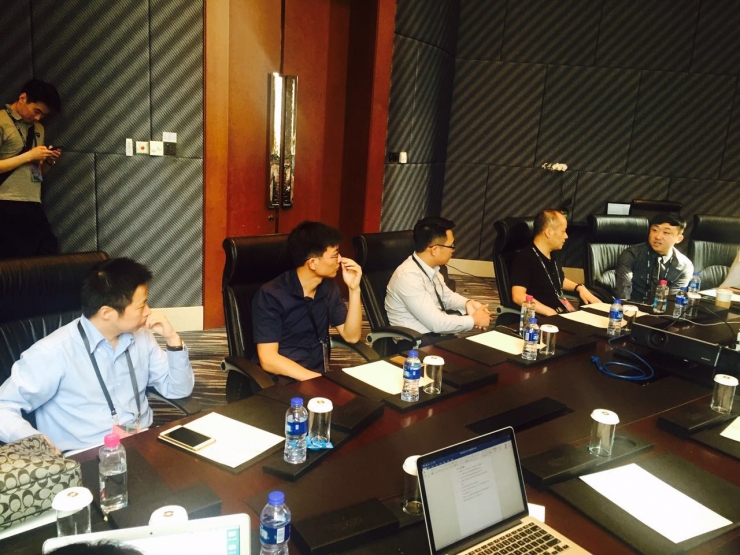
CCF-GAIR Intelligent Driving Roundtable Forum
In recent years, the integration of automobiles and science and technology has always been a hot topic of concern for people, especially this year, but throughout the development of nearly a dozen years, even if the concept has changed from “car networking†to “smart driving,†But the industry as a whole does not have an explosive leap like smartphones. What kind of state will "smart driving" develop in the next few years?
At the CCF-GAIR conference on August 13th in the smart driving workshop, Sagitar CEO Qiu Chunxin, Minieye CEO Liu Guoqing, Quanergy China General Manager Tang Jinsong, Huayuan Data Chief Data Scientist Yin Xiangzhi and QNX Greater China General Manager Zhang Five people in the intelligent driving industry of Renjie discussed the topic of smart driving in the future. After the meeting, Lei Fengnet (searching for the “Lei Feng Net†public concern) exchanged ideas with several big brothers on the question of “how intelligent driving will develop in the near future†and when will smart driving be able to break out? ? The next year or two? Three or five years? Or farther? Let’s listen to how some big brothers say.

Liu Guoqing:
Because of the long development cycle of automobiles, there will not be much change in the next year or two. At best, such as AEB, it will be widely used in the next three years. If something goes wrong, I think it is more likely to appear in the post-market. With the rise of the concept of smart cars, in the next two to three years, there will be some interesting new things in the post-market, just like in previous years. It started as a traffic recorder popular in Taiwan. Although many people say that things in the aftermarket will have some problems with various auditing standards, this does not affect its rise in the future.
Zhang Renjie:
The smart cars that we talk about now are mostly single-smart smart cars. Simply put, smart cars in the form of sensors, such as cameras, laser mines, and millimeter waves, actually have some limitations. The future development of smart cars requires communication support, vehicle-to-vehicle communication (V2V), vehicle and public transportation communication (V2I), vehicle-to-person communication (V2P), and vehicle-to-all communication (V2X). Standardization of the standard also takes a long time. These are easier to install on existing vehicles and public facilities, but how to make changes in stock cars requires government regulations to do this thing. To achieve full-scale smart driving, only a few cars on the road are smart. It is far from enough, so from this point of view, the overall popularity of smart cars may not be possible after two or three years. Even if it is a single-smart car, the entire cycle must reach 4 to 5 years. Within two years it will be impossible to see that autopilot has an intuitive performance in the market.
Tang Jinsong:
AEB emergency braking, lane departure and other functions will gradually become popular in the future, this time will not be too long, slightly advanced cars may also have Autopilot. Judging from the current situation, the development period of a general vehicle manufacturer is 4-5 years. It is currently expected that from 2019 to around 2020, China will realize automatic driving in certain scenarios, such as certain industrial parks, Tourist attractions, time-shared parking and returning cars. The development after 2019 will depend on the development and breakthrough of some key technologies in the next year, plus the promotion of some international automotive standards and the formulation of relevant laws and policies for intelligent road information systems in China. Smoothly, there will be some unmanned cars from 2020 to 2021, but these cars will still retain the framework of traditional cars, and they can manually intervene and take over in emergency situations. In about 2025, highly intelligent driving will be completed in some possible situations.
Yin Xiangzhi:
From a data point of view, there are still several major problems with smart driving. For example, where the core of the computer is placed. Because the amount of computation required for smart driving cars is very large, such as image recognition, deep learning, etc., all require a strong calculation ability. Putting these on the vehicle will increase the power consumption of the vehicle and the vehicle itself. Computing power is also a problem; if it goes to the cloud, then if there is a problem with the communication between the car and the cloud, any delays and other issues will cause obstructions to the calculation. In addition, how to analyze the data detected by a car to other vehicles in real-time analysis and seek breakthroughs in the parallel calculations is an important node in the future development of smart cars. None of these tasks can be completed within a year or two. Therefore, I think that there may not be much improvement in smart driving in the short term.
Qiu Chunxin:
We are now expecting to be completely unmanned and will be slightly later. The main reason is that there are many core technologies that are not yet mature enough. The core sensors used by driverless vehicles are completely different from traditional cars. They mainly include sensing technologies for identifying road conditions (such as lidar) and systems for making decisions. It is also an extremely complex system, but it is still at a very early stage. In terms of laser radar, it is very technically demanding and needs to be focused. Nowadays, many people who work in the smart driving industry do not use laser radar because it is too expensive. It takes a long time to get down. Therefore, the smart driving industry will not experience a major leap in the past two years. Irritable.
In the eyes of several “smart ridersâ€, smart driving will not make any breakthrough in the short term, and it is worth looking forward to in the long run. The future of smart driving depends on the circumstances. They all said that this road is very devious, technological development and breakthroughs, the formulation of policies and regulations, and the replacement of the market may all affect smart driving. However, they also believe that with a sound technical accumulation, the arrival of smart driving will be faster.
